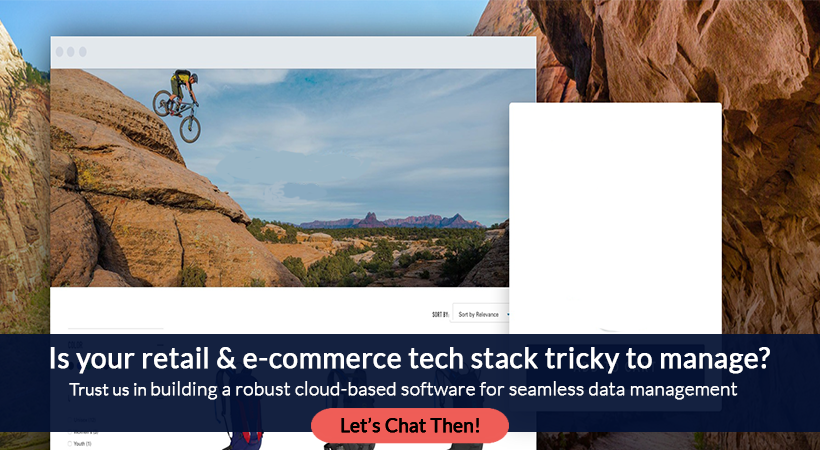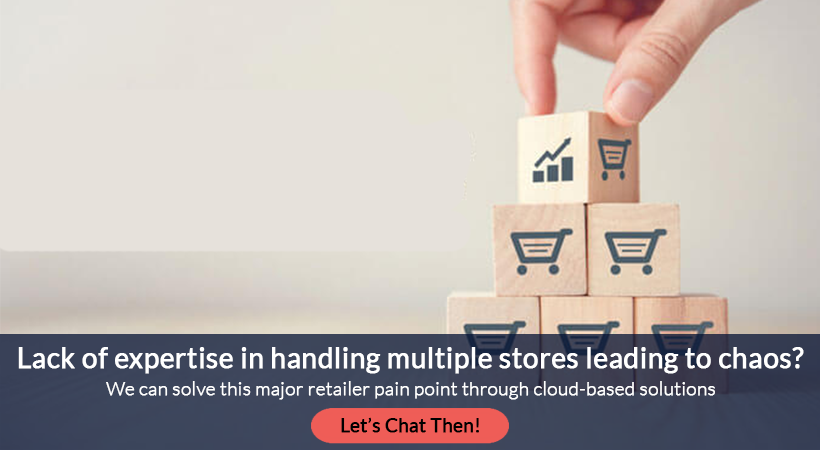The ‘Accenture at AWS re: Invent 2021‘ was held in November 2021. It marked the tenth anniversary of ‘Re: Invent’.
During the event, Amazon Cloud Technology announced various new services and functionalities, including computing, the Internet of Things, 5G, server-less data analysis, mainframe migration, and machine learning.
The release of computing instances based on a new generation of self-developed chip Amazon Graviton3 and Amazon Mainframe Modernization; to assist large-scale customers in migrating to the cloud, Amazon Private 5G to assist companies in building mobile private networks, and four Amazon cloud technology analysis service suites, and cloud services and solutions built for vertical industries are among these services and functions.
In addition, Amazon Cloud Technology announced a number of collaborations, including the migration of the Nasdaq trading market to Amazon Cloud Technology in 2022, and the creation of a new data management and analysis solution by Goldman Sachs Financial and Amazon Cloud Technology Commission financial services organization.
Furthermore, Meta Universe Enterprise also announced that Amazon Cloud Technology has been selected as a long-term strategic cloud service provider. Also discussed during the event was Metaverse Cloud.
This got us thinking. Is Metaverse cloud the new battleground for cloud tech providers to grow and deliver cutting-edge expertise?
We put down some Insights in the following sections to tell you how massively important it is for companies to start thinking long term with regards to cloud computing in metaverse.
Then let’s look at opportunities in metaverse cloud and how Kilowott’s cloud-based solutions can enable your business to be a key contender in the metaverse cloud wars.
What is the Metaverse?
The metaverse is a virtual universe that exists in parallel to our reality, as depicted by Neal Stephenson in his science-fiction novel “Snow Crash” from 1992.
People engage with one other in the novel using digital avatars of themselves. The metaverse connects virtual people and items to reality, combining the digital and physical worlds, digital life and social life, digital economics and real-world economy, digital assets and physical assets, and digital identity and real identity.
The epidemic hastened the metaverse’s arrival. Many real-world situations are fast being realized online, including O2O e-commerce, remote service halls, online education, online concerts, online exhibitions, remote healthcare consultations, and smart manufacturing.
The metaverse is the Internet’s future generation, built on virtual reality (VR) and augmented reality (AR) (AR).
The other Meta…
Meta’s initial name was Facebook, as we all know.
In the next five years, Mark Zuckerberg aims to change Facebook from a social media network to a “metaverse company,” even changing the name to “Meta” (Metaverse). This approach elevated the already popular meta-universe concept to new heights, breaking the circle.
Zhang Wenyi, Amazon’s worldwide vice president and executive director of Amazon Cloud Technology Greater China, believes that cloud computing may play a significant role in the current hot meta-universe.
“We believe Metaverse is a field where cloud computing can be tremendously empowered,” she stated. The Metaverse requires computation, storage, machine learning, and other services that are inextricably linked to cloud computing. Epic Games, for example, is a developer of metaverse games. The Fortnite (Fortnite) company has 350 million users worldwide, and Amazon Cloud Technology powers practically all of its workloads.”
“Meta-universe integrates a significant number of well-known technologies, and behind these technologies is cloud computing,” Gu Fan, General Manager of Amazon Cloud Technology Greater China Product Department, said of the flaming meta-universe concept.
Whether it’s modelling in the digital world or interacting with it, machine learning is inextricably linked. At the same time, the meta-environment universe’s would unavoidably generate a massive amount of data, and these data are inextricably linked to the underlying platform, which must be the cloud.”
The metaverse’s four technology pillars
There are four layers of technology in the metaverse. Holographic construction is the first layer; holographic simulation is the second layer; virtual and physical world integration is the third layer; and linking is the fourth layer.
Get in touch with Kilowott to see how we can help businesses with Hologram technology. It’s purpose is to produce a geometric model of the complete virtual world, which is then displayed on various terminal devices to provide consumers with an immersive experience. It is currently employed in applications such as virtual reality house tours and virtual reality retail.
The virtual world is infinitely close to the physical world due to the dynamic process of construction. The physical rules of our reality apply to persons and objects in the virtual world.
To achieve accurate location, virtual information overlay, and breaking the boundaries between the virtual and physical worlds, Virtuality-Reality Integration creates a high-precision 3D representation of the physical world.
Kilowott can provide a cloud solution with advanced operation control algorithms that merge vision and tactile data, allowing it to perform three fundamental business functions: automatic hard disc replacement, fine inspection, and asset inventory.
Each feature offers an all-in-one solution for IDCs in terms of unattended monitoring, unattended inspection, and data security.
As cloud computing matures and the “metaverse” becomes a tech industry buzzword, network equipment manufacturers find themselves in the limelight once more.
Although it isn’t quite the networking boom of the late 1990s, big-name tech firms like Cisco, Juniper, and Arista are regaining investor interest.
What trends do cloud computing in metaverse foresee?
Adam Selipsky, the new CEO of Amazon Cloud Technology, gave a two-hour keynote lecture at the re: Invent global conference.
Adam Selipsky began his address by reviewing the N great milestones of Amazon Cloud Technology’s leadership in cloud computing innovation.
Cloud computing has progressed into innovations and revolutions influencing the entire ICT sector in the last fifteen years, from being questioned to becoming a new generation of IT standards.
Adam, on the other hand, believes that cloud computing is still in its infancy.
Analysts at Gartner believe that cloud spending presently accounts for only 5% to 15% of total IT spending.
A huge number of workloads will be shifted to the cloud in the future, and a large number of innovations will take place there. The cloud sector has a bright future.
Netflix, NASA, and NTT DOCOMO are among the early Amazon cloud technology’s well-known customers, according to Adam Selipsky, who commended these cloud pioneer customers as pathfinders.
Amazon Cloud Technology also unveiled a slew of new services and features at the event.
Three new Amazon EC2s with self-developed chips, for example; the launch of a new service called Amazon Mainframe Modernization, which can cut the time it takes to migrate core mainframe workloads to the cloud by two-thirds; and the newly launched Amazon Private 5G, which allows businesses to quickly deploy and expand a 5G private network.
In addition, Amazon SageMaker Canvas, a visual point-and-click interface that allows business professionals and data analysts to develop highly accurate machine learning, has been added to the Amazon Cloud Technology Analysis Service Suite, along with three server less choices and an on-demand option.
Forecasting, the elimination of the necessity to develop programme code, and so on.
Amazon Cloud Technology also offers vertical-specific solutions, ranging from healthcare to financial services, manufacturing, and autos, among others.
For example, the Amazon IoT FleetWise service solves the problems of data collection, management, and cloud access for automakers, and the Amazon IoT TwinMaker service allows developers to create real-world digital twins, such as buildings, factories, industrial equipment, and production lines, more easily and quickly.
Roblox, an online gaming service company, became the Metaverse’s debut stock in March 2021.
Facebook later announced that it would become a meta-cosmic company in five years.
Just five months later, Facebook changed its name to Meta, which means “metaverse,” and its stock code to MVRS as a demonstration of its commitment to change.
Microsoft, Invesco, Tencent, and other behemoths are gearing up for the Metaverse as well.
For a while, the Metaverse was the talk of the town.
The Metaverse has been seen by many as the internet form of the next era following the mobile internet, despite the lack of a clear standard.
Everyone is grappling with imagination and looking for chances in the Metaverse, but no one has answered the question of how far away the Metaverse is from us. The mechanical body must be maintained in the actual world, no matter how full and rich the virtual world shown in hacking empire is.
Similarly, the development of basic technologies in the actual world is inextricably linked to the development of the Metaverse.
The absence of a sophisticated digital infrastructure The metaverse is merely a fantastic “sky pavilion,” but one thing is certain: it must be built on modern digital infrastructure.
The “immersive,” “low-latency,” and “ubiquitous” qualities of Metaverse place high demands not just on VR/AR gear and network delivery systems, but also on high-performance cloud-side computation and streaming media technology.
The Metaverse’s growth and development, as a brand-new object, requires a massive scale of computation and storage capacities.
Massive data production is required for a more authentic and full experience. The scale and completeness of the Metaverse are directly determined by real-world computer and storage power.
As you can see, taking the lead in this meta-cosmic conflict is tough without robust cloud computing and big data capabilities.
According to iMediaResearch, the global cloud computing market is estimated to reach $265.4 billion by 2021.
The United States amassed a big number of high-quality cloud computing technology businesses as the first country to do so. Amazon, Microsoft, and Google, the three cloud computing behemoths, accounting for 63 percent of the global market share.
China is the world’s fastest-growing cloud computing market, with Alibaba Cloud, Tencent Cloud, and Huawei Cloud among the top three local providers.
Alibaba Cloud, the world’s third largest cloud computing company, relies on the growth of e-commerce to gain the attention of many domestic enterprises, accounting for approximately 40% of the domestic market share.
Tencent Cloud was only founded in 2010, but because to Tencent’s massive investment and gaming environment, it swiftly rose to the top ten cloud computing companies in the world.
Huawei Cloud is the government cloud market’s powerhouse, with a domestic government cloud market share of 32 percent, the most in the world.
Cloud computing has entered a new era, with the market concentration of Google, Amazon, Microsoft, Tencent, Ali, Huawei, and other market giants increasing.
The cloud computing model has had a strong impact in recent years, and the future of cloud computing will have a further evolution, with more technology areas of deep integration, resulting in a stronger “chemical reaction.” as the Metaverse’s optimal basic support platform, cloud computing provides a large number of benefits.
The meta-space scenario also illustrates the features of distributed network connection, ICT resource sharing, elastic service rapid, on demand, and dynamic expansion, based on its scale effect on resource use and high utilization rate.
Infrastructure low cost of hardware due to batch purchase scale effect, cloud trend of green data centre energy efficiency (pue) decline, cost savings, virtualization technology business flexibility greatly improve the utilization of resources, and disaster prevention in the process of expansion, construction, maintenance, personnel, and other supporting costs will all benefit Yuan universe universal access.
Cloud computing has much higher costs, stability, security, and efficiency at the infrastructure level than traditional cloud computing.
The ecological benefits of the original cloud giant IaaS-integrated PaaS’s service development may play a significant role in the metacosmic period.
In truth, the meta-universe cloud is the product of a combination of technologies. New computing architectures are evolving that will birth new species on the cloud.
A new cloud-centric computer architecture is forming at one end of the cloud computing spectrum, and as cloud-based technologies converge further, any future technology opportunities will migrate farther to the cloud.
The cloud defines hardware downward at the infrastructure level, self-investigates fundamental technologies such as chips, servers, and operating systems, and produces a cloud-centric hardware system.
Second, as core software is refactored on the cloud, the open source community becomes a hub of innovation, inventing new development methodologies like low code to make the cloud more accessible.
Finally, as the future 5G network develops, computation and data will accelerate their migration to the cloud, resulting in the emergence of new species such as cloud computers, meta-universes, and autonomous driving. Computing and data are moving to the cloud at a quicker rate as communications technologies such as 5G emerge, spawning more new species on the cloud.
The cloud has gone through phases one and two, where traditional IT has been supplanted by the cloud, but the true revolution is yet to come, and the cloud will soon be home to a plethora of new species. For such a technical explosion, there is a very solid foundation.
According to Amazon worldwide vice president and Amazon Cloud technology greater China executive director Zhang Wenxuan, cloud computing can enable a lot of fields in the current hot meta universe.
“We believe cloud computing will play a significant role in the metaverse,” says Zhang Wenxuan.
The metasexes necessitate cloud computing for computing, storage, machine learning, and other functions. Epic Games’ meta-game Fortnight, for example, contains three games. It has 500 million users, and Amazon’s cloud hosts practically all of its business.”
These undoubtedly provide advanced infrastructure for meta-architecture, ranging from hardware to software, allowing meta-architecture to progress from concept to reality. “Cloud computing is at the heart of this meta-system, which is where a lot of well-known technologies were born,” said Gu Fan, general manager of Amazon Cloud Technology Greater China.
Machine learning is critical for modelling and interacting with the digital world.
At the same time, the metaverse’s universe is certain to generate massive volumes of data, which is inextricably linked to the underlying platform, which has to be the best platform.”
All data will be on the cloud in the future, regardless of what device you use or how many devices you have.
Everyone, every business, will have a dedicated cloud space, and all processing burden will be on the cloud, thus the new world of the future is no longer far away.
What insights can we gain from metaverse cloud?
These main networking businesses — Cisco Systems (CSCO), Juniper Networks (JNPR), Arista Networks (ANET), and Extreme Networks (EXTR) — have easily exceeded the Nasdaq composite’s 20% increase for 2021. A couple’s worth has doubled or is on the verge of doing so.
One reason could be that the computer networking industry has beaten back the worst of its “white-box” rivals. This is when Asian manufacturers use commodity components to create low-cost items. Instead, network equipment manufacturers are bringing next-generation technologies to market with larger profit margins.
“In a word,” Juniper Executive Vice President Marcus Jewell stated at a recent finance conference, “networking is sexy again.”
Since the beginning of the year, tech stocks in the IBD Computer Networking group have gained about 64%. Out of 197 industries tracked by IBD, the company is presently ranked No. 7 based on a variety of characteristics, including six-month price performance.
This year, Cisco stock has increased by more than 37%, while JNPR stock has increased by more than 50%. Arista’s stock has nearly doubled in value since the beginning of the year, rising by 92 percent. Extreme Networks, on the other hand, has risen 108 percent.
As the entire market gyrates, Juniper stock and Extreme stock remain prolonged above breakouts on a technical basis. Arista’s stock is fluctuating between a buy and a sell point.
After a post-earnings breakout, Cisco stock, a Dow Jones component, is approaching the top of a buy range. While diversifying away from its core business of selling network switches and routers, the acquisition-savvy tech sector behemoth wants to increase recurring revenue from subscription-based software and services.
Juniper has undergone a huge shift since March 2019, with the acquisitions of Mist Systems, Apstra, 128 Technologies, and Netrounds. Meanwhile, over the last three years, Arista has purchased BigSwitch Networks, Awake Security, and Mojo Networks, expanding into new areas.
Extreme Networks is another option. In 2019, it purchased Aerohive, and more recently, Ipanema.
Analysts believe that these tech stocks will be better positioned as cloud computing evolves as a result of the acquisitions.
Cisco holds the majority of the routing gear market share in the United States, but China’s Huawei is gaining ground on the world stage.
Cloud Computing Hybrid
Many cloud-client organisations in the United States want to continue using a hybrid cloud computing approach. They use their own on-premise data centres as well as external cloud services there. For legal or security reasons, certain companies want apps to remain on-premise. The trend to hybrid clouds is aided by container technology.
Many American businesses intend to use numerous cloud computing service providers rather than just one. As a result, they have more negotiating leverage and flexibility when it comes to transferring company workloads to the cloud.
The three largest cloud computing companies are Amazon.com’s (AMZN) Amazon Web Services, Microsoft’s (MSFT) Azure, and Alphabet’s (GOOGL) Google Compute Platform. However, Juniper’s stock is rising as IBM (IBM) and Oracle (ORCL) both add cloud computing clients.
According to researchers, computer network management is becoming more complex as businesses transition to hybrid and multi-cloud infrastructure. Industry incumbents like VMware (VMW) and Cisco, which purchased AppDynamics in 2017, have benefited from this.
With the purchases of BigSwitch and Apstra, Arista and Juniper entered the on-premise/multi-cloud management industry, respectively. Morgan Stanley anticipates increased rivalry as Cisco, Arista, and Juniper compete against a slew of software startups such as Aviatrix, Alkira, and Nefeli Networks.
Furthermore, large cloud computing providers may expand into on-premise network administration. AWS Cloud WAN is a managed service that connects Amazon’s public cloud with data centres and branch offices.
Edge computing equipment is in high demand as a result of cloud computing.
A growing demand for edge network routers and switches is another cloud computing development to keep an eye on. Edge computing moves applications and data infrastructure from data centres to local locations including hospitals, factories, and retail establishments.
At the MKM Partners finance conference, Juniper’s Jewell observed, “Clouds are getting disaggregated.” “It entails more points of connection. It’s great news for networking firms “Added he.
In order to pursue edge computing deployments, Cisco and IBM have formed a marketing alliance. Analysts predict that the edge computing sector will take years to grow and benefit Cisco stock.
The so-called metaverse — virtual worlds made possible by cloud computing and digital technology — is still in its infancy. The metaverse is a shared, 3D environment that incorporates virtual reality or augmented reality, according to technologists.
The most popular metaverses are projected to be immersive online gaming experiences and social media apps at first. Workplace collaboration, e-commerce, such as digital fashion, education, or real estate could be the emphasis of other metaverses.
Accelerated computers will be required for metaverses. Metaverse plumbing will most likely be housed in hyperscale internet data centres. Metaverses will be accessible to consumers and businesses via fixed broadband, 5G, and eventually 6G wireless networks.
SD-WAN is a rapidly expanding target market for networking equipment and systems vendors.
Facebook (META), the tech stock that has remade itself as Meta Platforms, aspires to be the metaverse’s leader. Arista Networks’ two biggest customers are Facebook and Microsoft, which together account for around 30% of its overall revenue in 2020, down from 40% in 2019.
What solutions can Kilowott provide, especially in building metaverse cloud centers?
As cloud computing matures, a new struggle looms as hyperscale data centres migrate from 100G to 400G networks. Stocks in the technology sector With faster offerings, Cisco, Juniper, and Nokia want to compete with Arista. Cisco is relying on its new semiconductor devices, whereas Juniper created its own Triton chip.
In a research, Raymond James analyst Simon Leopold stated, “We continue to envision the 400G cycle as Arista’s strongest challenge to its incumbency.”
According to analysts, Microsoft is anticipated to lead the way in data centre upgrades to 400G in 2022. In 2023, Meta Platforms may be introduced.
When demand spikes, hyperscale data centres are designed to ramp up computational power. The upgrade to 400G simply means more bandwidth — in other words, bigger pipes to enable mobile app downloads and e-commerce.
While Arista’s core customers have been IT and internet firms, the company is gaining ground in the corporate sector. For “campus” network switching gear sold to large organizations, the company forecasts a 100 percent increase in revenues to $400 million in 2022.
Cisco, on the other hand, is by far the largest provider of networking equipment to enterprise customers, including large corporations, government organizations, and educational institutions. Due to growing office vacancy rates and the transition to remote work, business spending on data networks slowed during the coronavirus epidemic.
However, profit margins for enterprise equipment are typically higher than those for internet data centres.
Rendering
This Kilowott solution provides a remote rendering service to assist the creation of various metaverse materials and digital scenario content in a rapid and high-quality manner.
AI and Data Analytics
Through computer vision, machine learning, natural language processing (NLP), and intelligent speech, our cloud-based system can deliver an integrated perspective of the virtual and physical worlds, merging numerous metaverse application scenarios.
In addition, the data lake storage solution based on Object Storage Service (OSS) can provide a variety of data kinds and access methods.
IOT
This cloud solution provides reliable wireless connectivity and signal transmission services for the virtuality-reality integration of the metaverse.
Blockchain
Blockchain as a Service (BaaS) is a promising new technology. It ensures the integrity and non-tamperability of the metaverse’s underlying data, allowing users to create a value-based Internet built on mutual trust and efficient collaboration.
Container Service in the Cloud
The metaverse cam benefit from Kilowott‘s cloud-solutions which provides a stable, low-latency, and pleasant user experience. We can deliver a powerful microservice scheduling, orchestration, deployment, and publishing features to provide a highly available, highly scalable, low-cost, and automated CI/CD system that helps users quickly construct metaverse applications.










